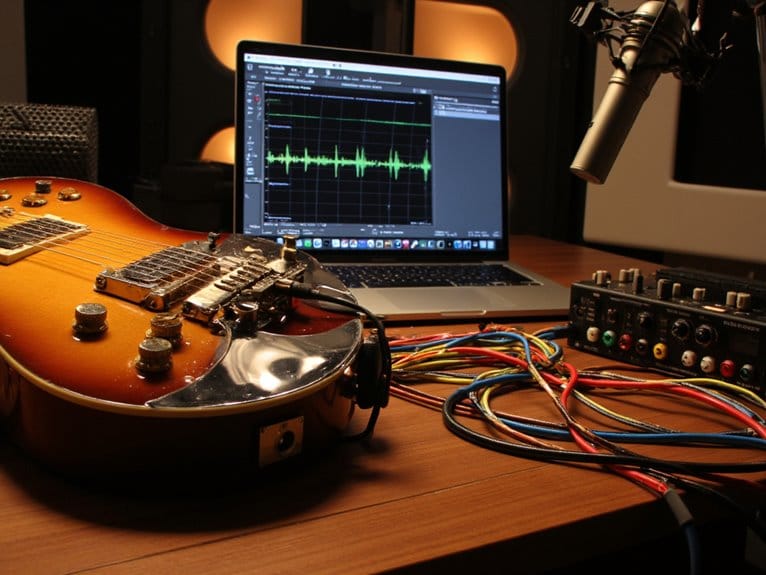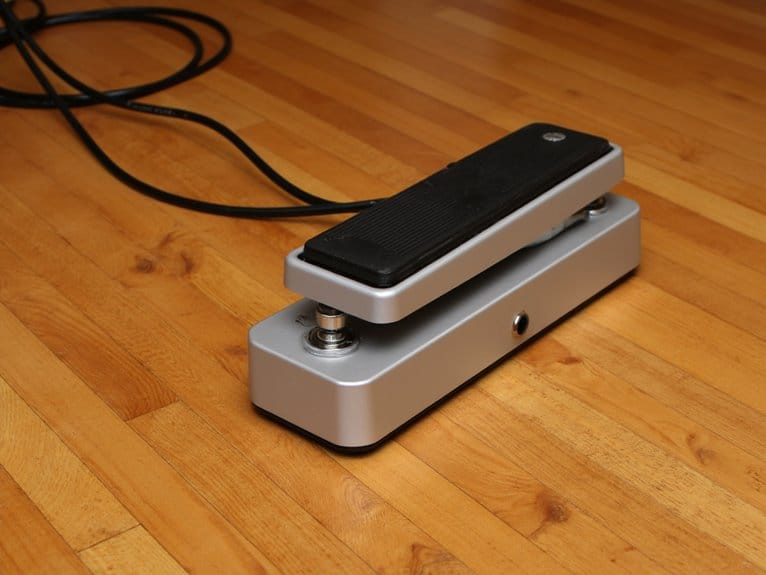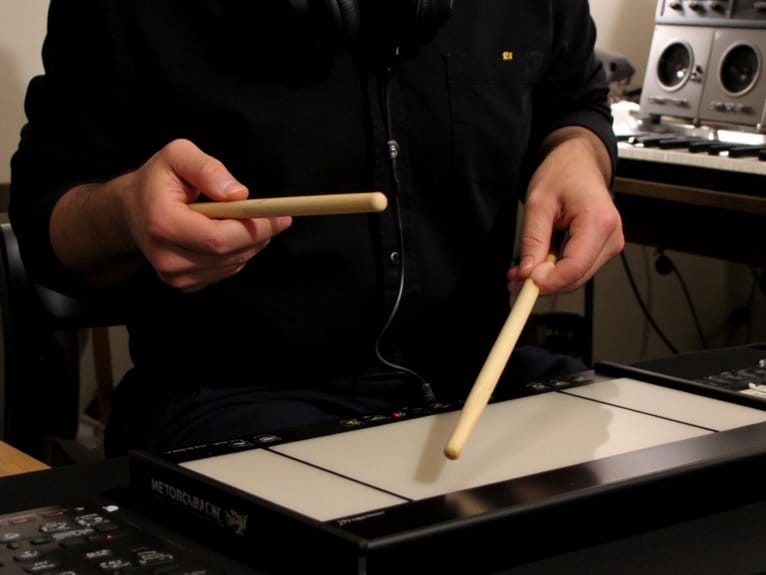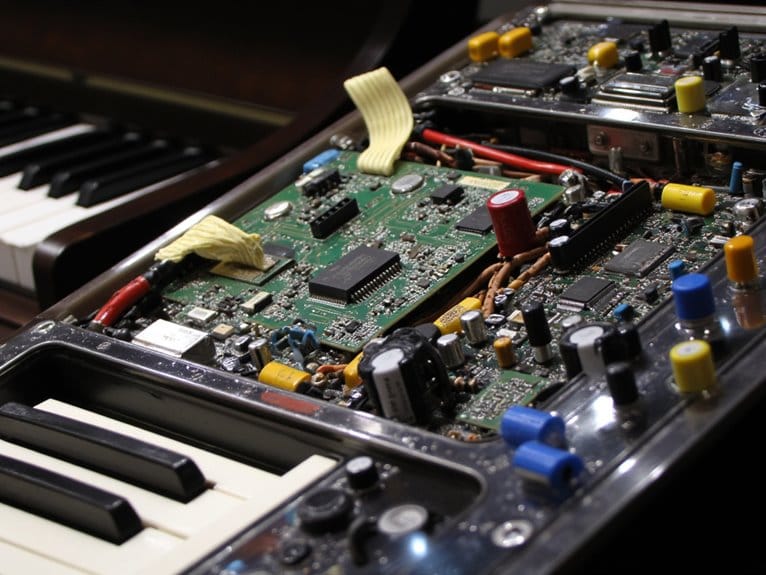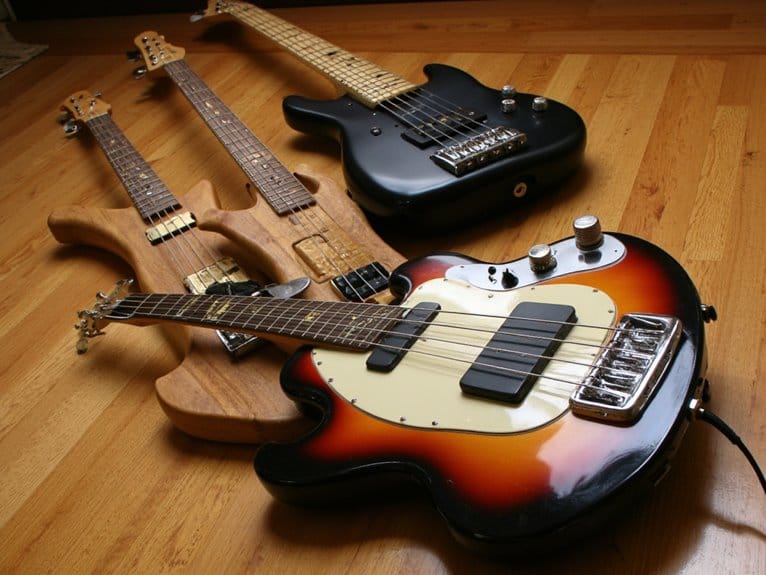Neural Amp Modeler (NAM): Revolutionary Guitar Tone Modeling
You’ll find Neural Amp Modeler (NAM) represents a groundbreaking leap in guitar tone simulation, utilizing WaveNet deep learning architecture to capture authentic tube amp behaviors with remarkable precision. Unlike traditional modeling approaches that rely on circuit analysis, NAM learns directly from input-output audio pairs, mastering the complex nonlinear dynamics that define vintage amplifier character. The open-source platform democratizes access to premium amp tones through community-driven model sharing, while seamless DAW integration guarantees professional workflow compatibility. Explore further to uncover the technical innovations reshaping modern guitar recording.
We are supported by our audience. When you purchase through links on our site, we may earn an affiliate commission, at no extra cost for you. Learn more.
Notable Insights
- NAM uses WaveNet architecture to capture complex nonlinear tube amp behaviors for authentic musical tone reproduction.
- Open-source platform with extensive model sharing through communities like Tonehunt, democratizing access to vintage amp tones.
- Seamless DAW integration supporting VST, AU, and AAX formats across Pro Tools, Logic Pro X, and Ableton Live.
- Eliminates traditional modeling guesswork by learning directly from input-output audio pairs for accurate time series dynamics.
- Current limitations include power amp overdrive accuracy and signal artifacts, driving future development in non-linear modeling.
Deep Learning Technology Behind Authentic Amp Simulation
While traditional amplifier modeling has relied on painstaking circuit analysis and mathematical approximations for decades, Neural Amp Modeler represents a fundamental shift toward data-driven authenticity that I’ve found remarkably effective in practice.
You’re looking at WaveNet architecture specifically optimized for real-time audio processing, which captures the complex nonlinear behaviors that make tube amps sound genuinely musical. Rather than modeling individual circuit components, NAM’s neural networks learn directly from input-output audio pairs, mastering the time series dynamics that define each amplifier’s unique character.
This approach eliminates the guesswork I’ve experienced with traditional modeling, where engineers manually tune parameters to approximate amp behavior, often missing subtle saturation characteristics and harmonic complexities that separate legendary amplifiers from forgettable ones. The system excels at capturing distortion and saturation nuances that define each amplifier’s sonic fingerprint, making previously impossible-to-model vintage characteristics accessible to modern producers. Advanced robotic data collection systems enable the gathering of thousands of control positions automatically, providing the comprehensive datasets necessary for training high-fidelity neural network models.
Unlike traditional hardware amplifiers that require significant wattage outputs for stage performance, NAM’s software-based approach delivers professional sound quality regardless of the monitoring system’s power rating. This technology provides guitarists access to tube-driven tones that traditionally required expensive amplifier hardware, democratizing high-quality sound production for musicians across all skill levels. This innovative software solution enables musicians to experiment with a vast range of soundscapes, as they can easily switch between different effects and styles without the need for physical gear changes. With the integration of guitar amp sim plugins, players can replicate the nuances of their favorite classic amplifiers from the comfort of their home studio. This unprecedented flexibility allows for creativity and exploration, empowering artists to refine their sound in ways that were previously unimaginable.
Open-Source Community and Model Sharing Ecosystem
Because NAM’s open-source foundation removes the traditional barriers that’ve kept quality amp modeling locked behind expensive proprietary systems, you’re witnessing a democratization of tone that I find genuinely revolutionary for working musicians.
The community contributions flowing through platforms like Tonehunt create unprecedented model accessibility, where you’ll discover everything from vintage Fender Princetons to boutique amp captures that would otherwise cost thousands to experience.
What makes this ecosystem particularly compelling are three key advantages:
- Free model sharing across a vast library of user-generated captures
- Collaborative development that continuously refines capture techniques and software improvements
- Cross-platform compatibility extending from DAWs to hardware pedals like MOD DWARF
This approach fundamentally challenges commercial modelers by removing licensing restrictions while fostering innovation through shared knowledge. Active user communities continuously expand the available model library while encouraging creative experimentation and preset sharing among musicians. The modeling accuracy achieved through NAM consistently receives praise from users who report it outperforms many established commercial amp simulation products.
DAW Integration and Cross-Platform Compatibility
When you’re ready to integrate NAM into your recording workflow, you’ll find that its extensive DAW support spans virtually every major platform, from Pro Tools and Logic Pro X to Ableton Live and Reaper, with VST, AU, and AAX formats ensuring seamless compatibility across both macOS and Windows systems.
Your DAW setup becomes straightforward once you’ve selected the correct plugin format during installation, though you can always reinstall if you missed one initially.
Plugin management involves loading .nam model files alongside speaker cabinet impulse responses directly within the interface, while enabling input monitoring lets you hear real-time processing during recording sessions. If NAM doesn’t appear after installation, most DAWs will auto-scan for new plugins upon launch.
Multiple NAM instances across separate tracks create diverse tone layers, and the built-in IR loader supports custom speaker emulation without leaving your familiar DAW environment. Neural Amp Modeler maintains a small processor footprint while delivering professional-quality tones that won’t strain your system resources.
Limitations and Future Development Opportunities
Despite NAM’s impressive capabilities in your DAW workflow, the technology faces several inherent limitations that stem from the fundamental challenges of modeling analog circuitry through neural networks.
Current model accuracy struggles particularly with power amp overdrive and discrete component behaviors, while signal processing artifacts become noticeable when you push settings beyond standard parameters. The training process requires precise reamping setup with specialized equipment to achieve optimal results.
Neural amp modeling still faces challenges accurately reproducing power tube saturation and component-level behaviors at extreme settings.
The most significant development opportunities include:
- Enhanced Non-Linear Modeling – Improving neural architectures to better capture dynamic responses and subtle analog interactions
- Full Rig Integration – Developing unified approaches that seamlessly combine amp, effects, and cabinet modeling without requiring separate IRs
- Parameter Optimization – Refining machine learning algorithms to reduce variability and eliminate high-frequency artifacts
Training high gain amplifiers presents additional challenges as LSTM training can produce erratic and unpredictable results that affect overall model quality. This unpredictability necessitates careful adjustments during the training process to mitigate adverse effects on performance. Implementing soft amp sim gain staging techniques can help maintain consistent dynamic range, leading to more reliable outputs. Additionally, fine-tuning these techniques allows for better control over the harmonic content of the amplified signal, enhancing the overall fidelity of the model.
I’ve found these limitations don’t diminish NAM’s current value, but they highlight exciting possibilities for future iterations.
On a final note
You’ll find that NAM represents a significant leap forward in guitar tone modeling, though it’s not without its learning curve and computational demands. While I’ve seen impressive results from its neural network approach, you shouldn’t expect it to completely replace traditional hardware just yet. The open-source community continues expanding the model library daily, making this technology increasingly accessible for home recording, live performance, and professional studio work.

